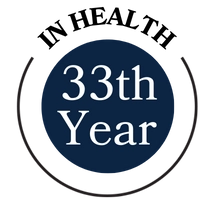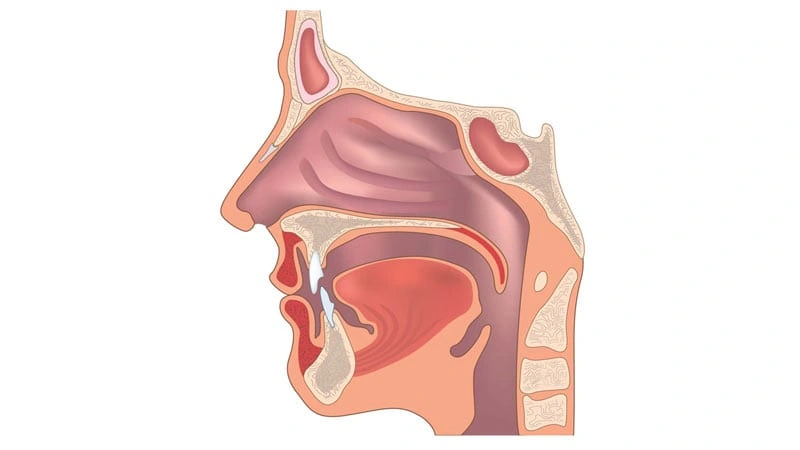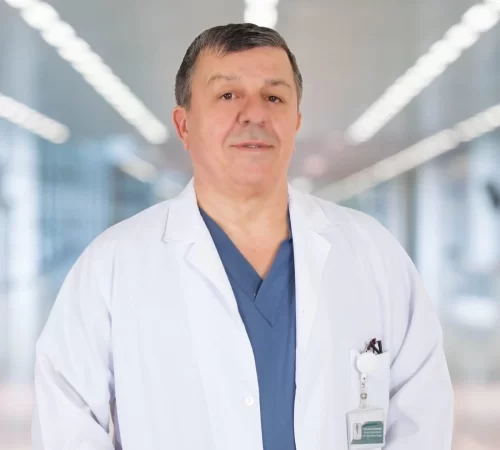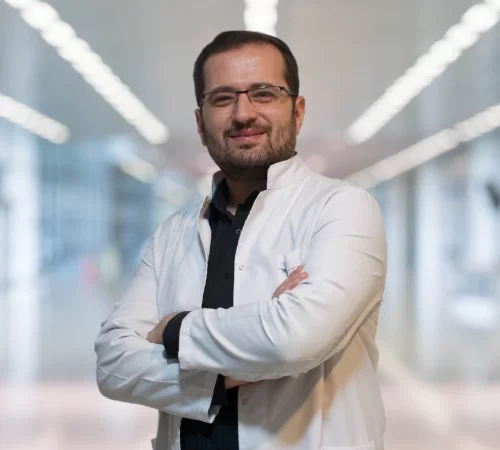The Otorhinolaryngology (ENT) department of Avicenna Hospitals is a medical branch that diagnoses and treats illnesses of the head and neck, including the outer ear, eardrum, middle ear, nose, and throat, esophagus, vocal cords, facial nerves, for all age groups. Patients with head and neck tumors, including the skull base and the brain’s interface, are also treated.
Treatment and diagnostic procedures are carried out by utilizing the latest technology. The patient can view the procedure on the screen. With the aid of an audiometer, the tests concerning hear loss, ear ringing, dizziness, and imbalance are examined and proper treatment is provided. Surgeries involving mouth cancer, sinus, and nose deviations, and allergies are carried out with the latest technology.
What is Otorhinolaryngology?
“Otorhinolaryngology,” also known as Ear, Nose, and Throat (ENT), is a medical specialty that focuses on the diagnosis and treatment of illnesses of the head, neck, ear, nose, and throat. ENT diseases may affect people of practically any age group. Physical examinations can diagnose the majority of disorders. This shows that otorhinolaryngologists are the doctors who practice most intensively. Ear, nasal channel, nose, sinuses, mouth, larynx, salivary glands, upper pharynx, and thyroid are areas of interest in the ENT. Otolaryngologists are doctors that specialize in the treatment of the ears, nose, and throat.
Many medical treatments such as the congenital abnormalities and aesthetic problems of the ear bud, the treatment of the sudden or long-lasting diseases of the middle ear and the external ear canal, the repair of the eardrum and middle ear bones, the application of cochlear implants, also known as bionic ears, snoring and sleep apnea surgeries are carried out by specialist physicians from their relevant branches at our hospital.
Conditions Treated in ENT
- EAR RELATED (OTOLOGIC) DISEASES
External auditory canal (DKY) diseases
Middle ear (OC) disorders
Inner ear (HR) diseases
- RELATED (RHINOLOGICAL) DISEASES OF THE NOSE
- ORAL REGION AND PHARENX (INTRA-ORAL AND pharynx) DISORDERS
- LARYNGOLOGY DISEASES
- HEAD AND NECK DISEASES
Important ENT Surgeries
- Endoscopic Sinus Surgery (ESC)
- Miringoplasty – Closing Perforations Of The Eardrum
- Fluid Retention In The Ear (Chronic Serous Or Mucoid Otitis Media) and Grommet Tube Placement
- Septoplasty – Nasal Septum Deviation Operation
- Rhinoplasty – Septorhinoplasty – Plastic Nose Surgery * TONSILECTOMY
Ear Diseases
In-ear illnesses include hearing disorders, ear infections, balance issues, problems with the face or cranial nerves, and problems with the outer and inner ear. Tinnitus, fluid accumulation in the ear, earwax difficulties, acute otitis media, inflammation of the external ear canal, and hearing loss are all diseases of ENT. Ear tumors, ear discharge, earache, and ear bleeding are among the issues they treat.
Nasal Diseases
Otolaryngologists treat diseases like runny nose, cold, nasal deformities, nasal curvatures, unexplained nosebleeds, smell problems, nasal aesthetics, sinusitis, and allergic rhinitis.
Throat Diseases
otolaryngologists cover general disorders of the upper respiratory system and digestive tract, as well as issues with the anatomy of the larynx. They also diagnose and treat breathing, voice, and swallowing disorders. Ear, nose, and throat specialists treat conditions including sleep apnea, snoring, and pharyngitis, as well as tonsil operations.
Neck Masses
The most common cause of swelling in the neck is the enlargement of the lymph nodes due to infections. It is usually very painful. There are nearly 300 lymph nodes in the head and neck, they are normally not palpable and invisible. They can be palpated with deep palpation in thin people, with thin and long necks. sometimes, they can be directly infected, or they swell as a reaction in cases such as inflamed acne on the face, tooth, tongue, mouth, and tonsil infections. They also occur when cystic remnants that have been present since birth expand or become infected. Sometimes, they may occur due to the spread of malignant tumors in the lymph nodes.
Biochemical tests and endoscopic examinations, ultrasound, computed tomography, and magnetic resonance imaging (MRI) investigations may be required in the case of differential diagnosis. Biopsies from the mass may be obtained by fine-needle aspiration, true-cut biopsy, or incision if necessary. As a result of the pathological investigation, a clear diagnosis can be made.
Depending on the diagnosis, medical or surgical treatment, radiotherapy or chemotherapy may be required.
Endoscopic Sinus Surgery (ESC)
The modern treatment method used in the operation of sinus diseases (chronic infections, polyps, cysts, tumors) is called endoscopic sinus surgery. It is done using sinus-specific equipment, under monitor view, through nasal telescopes that enter the nose, and without any incisions on the exterior of the nose.
Chronic sinus infections, nasal polyps, and sinus tumors, as well as anterior skull cavity injuries, trauma-induced orbital damage, cerebrospinal fluid leaks, inflammation of the lacrimal sac without an external incision (dacryocystorhinostomy), and surgical treatment of pituitary tumors, are all treated with ESC.
It should be applied by experienced surgeons in the procedures to be applied in these matters and complications, otherwise, inevitably, complications (bleeding, infraorbital bleeding, orbital trauma, tear duct injury, CSF leakage, intracranial complications) will occur. General anesthesia is generally preferred.
Myringoplasty – Closing the Eardrum Hole
It is the process of repairing the eardrum due to perforations in the eardrum due to previous middle ear infections or permanent holes due to traumas of the eardrum (slap, explosion, foreign body).
In patients with a hole in the eardrum; In the conduction-type hearing loss, infections occur from time to time as a result of water escaping from the outside. It may occur especially during bathing or when entering the pool into the sea. Other than that, there may be ear humming. If left untreated, hearing loss may increase due to recurrent infections. People have to constantly protect their ears; they cannot enter the sea and the pool.
If the hole is too small, it can be repaired by entering the external ear canal with local anesthesia. If the hole is large, it can be repaired under general anesthesia. It is done by entering through the external auditory canal or behind the ear. The patient’s temporal muscle sheath, ear cartilage membrane, and cartilage are commonly utilized to heal the hole. Materials like ready-made fascias, meninges, and vessel walls can be employed in some instances. We call this procedure tympanoplasty when the patient also has a problem with the ossicular chain.
Fluid Collection in the Ear (Chronic Serous or Mucoid Otitis Media) and Insertion of an Ear Tube
In upper respiratory tract infections, effusion (fluid) may be collected temporarily with pain in the ears. With treatment, this situation improves in a short time. This is caused to infection-related edema obstructing the nasal aperture of the Eustachian tube, which connects the nasal cavity to the middle ear.
The task of the Eustachian tube is to ventilate the middle ear cavity and resist the mucus inside the throat. In children, the Eustachian tube is shorter, straight, and horizontal than in adults, but reaches the angulation of adults at the age of seven. Due to frequent upper respiratory tract infections, hypertrophies in the adenoid, allergic colds, or inflammatory cysts, the Eustachian tube becomes blocked and cannot do its job, so non-inflammatory fluid accumulates in the middle ear. If the fluid accumulated in the middle ear, despite all treatments, does not improve in more than three months, a ventilation tube should be inserted to provide ventilation and drainage of the middle ear. Your adenoid is checked and if there is adenoid meat should be taken at the same time.
Operation
The operation is performed under general anesthesia. Without making an external incision in the ear, paracentesis (eardrum incision) is performed in the anterior lower quadrant of the eardrum under microscopic vision by entering through the external ear canal, first, the fluid or mucus in the middle ear is aspirated and then the groomed tube is inserted. The patient does not have any serious pain after this procedure. Hearing returns to normal even on the same day.
The purpose of the tube is to take over the task of the Eustachian tube until it returns to its normal function. For the first time, short-term tubes (4-6 months) are used and the tubes are automatically thrown into the external ear canal. If the situation recurs after the tubes are expelled, then it is necessary to put tubes called T-tubes that cannot be self-expelled, but this is rare. It stays in place for more than a year and can be removed under the doctor’s control.
Septoplasty – Nasal Septum Deviation Operation
The partition that separates the two nasal cavities from the middle is called the septum. It is made of cartilage at the front and bone at the back. On both sides of these structures are soft tissues called mucoperichondrium and mucoperiosteum. The curvature of this structure that prevents breathing through the nose is called septum deviation.
Nasal cavities are not always at the same opening. At times varying from person to person (between 3 and 12 hours), volume changes occur alternately in the mucous membranes in the nose and the conchae (nasal meatus) on the sidewalls of the nose. This event is called the nasal cycle. This scenario, which is not noticeable in normal individuals, is noticeable in those with deviations, who may feel the nose opening and shut throughout the day. Those with deviations usually lie on the blocked nose side so that the open one stays open.
Since the development of the nose is not fully completed before the age of 17, it should not be performed. However, the limited operation can be performed in children with difficulty in breathing due to severe nasal trauma, or with deviations that cause extreme bilateral nasal congestion.
Curvature and hypertrophy in the turbinates are corrected by entering through the nose without any external incision. Although the operation can be performed under local anesthesia, it is usually performed under general anesthesia. When the operation is completed, depending on the condition of the septum and the procedures applied to the turbinates, no tampons may be placed or silicone splints and/or microcell tampons may be placed that do not cause excessive discomfort to the person.
Rhinoplasty – Septorhinoplasty – Aesthetic Nose Operation
Restructuring the shape of the nose is called rhinoplasty or aesthetic nose surgery. If there are conditions that prevent the patient from breathing (deviation, turbinate hypertrophy, etc.), then if these are corrected at the same time, septorhinoplasty is performed. This operation should not be performed before the age of 18, except in rare cases.
Structural disapproval of the shape of the nose, nasal deformities caused by previous traumas, accidents, or nasal deformities caused by tumors should be corrected. In addition, the operation may be requested only because of the aesthetic appearance, without any problems with the nose. Without psychological problems or being influenced, only the person himself wants and has reached a certain age of maturity.
The operation can be performed with open and closed techniques. If there isn’t excessive deformity in the cartilages and the upper parts of the septum, the doctor applies a closed technique. The open technique is applied by making an incision in the middle part of the nostrils, called the columella. In this technique, the skin on the cartilages and bones can be lifted and a smoother reconstruction can be achieved. Required grafts can be placed more easily and properly. There is no difference between the two techniques other than that.
Tonsillectomy – Tonsil Surgery
The tonsils are the largest part of our body’s defense system. They are located at the intersection of our respiratory and nutritional paths. It helps to recognize microbes that enter the body through the respiratory tract or diet. There are adenoids, which have a similar structure, tonsils at the root of the tongue, lateral lymphoid columns on the opposite wall of the throat, and abundant lymphoid tissues separately. With the removal of the tonsils, these other tissues continue the same task. In some cases, it may be necessary to take them as well.
It should be operated on because of chronic tonsillitis and abscesses. These lead to bacterial angina, its size makes breathing and feeding difficulties, hypertrophies causing snoring and sleep apnea, halitosis, and tumoral growth.
The operation is performed under general anesthesia. Classical surgery can be performed with tonsillectomy, as well as with bipolar cautery, and thermal welding. The advantage is that there is no bleeding, it ends in a short time and there is less pain afterward. Bleeding control is done by Sutures when necessary. Bleeding may occur at a rate of one percent. Early bleeding occurs within the first four hours. Bleeding is likely to occur in the first ten days, with decreasing rates. If bleeding occurs, you should contact the doctor immediately.






